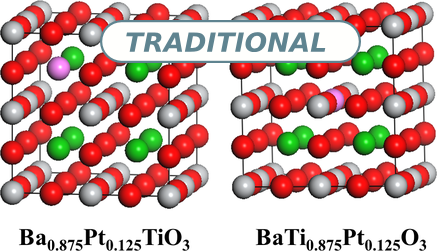Optoelectronic tuning of Barium titanate doped with Pt: A systematic first-principles study
DOI:
https://doi.org/10.4279/pip.160002Keywords:
Perovskites, band gap engineering, Pt–dopant, absorption, spin polarizationAbstract
In this study, the structural, electronic and optical characteristics of Platinum (Pt)-doped cubic BaTiO 3 perovskite were inspected via density functional theory (DFT) calculations. Generalized gradient approximation (GGA) and Pedraw–Wang 91 (PW91) functional, as applied in CASTEP code, provide an atomic level understanding of the influence of substituting 0.125 Pt dopant at Ba and Ti positions. Results indicate that the optimized lattice parameters and band gap are in good agreement with the experimental and theoretical data. Furthermore, the total and projected density of states (TPDOSs) analysis demonstrates that Pt–dopant integration has an impact on diminishing the band gap and shifting the absorption spectra towards the visible light region. Thus, it is suggested that substituting Ti and Ba atoms with Pt would enhance the optoelectronic characteristics of the host system, due to existing Pt–5d electronic states. Moreover, the negative formation energy values indicate the thermodynamic stability of the modeled configurations. These detailed results provide valuable insights into the physical properties of Pt–BaTiO 3 and its behavior across a range of photon wavelengths. To our knowledge, this contribution evaluates for the first time the influence of introducing platinum (Pt) into a BaTiO 3 perovskite system. The overall findings demonstrate a valuable appraisal of support for experimental synthesis of Pt–BaTiO 3 to serve in various optoelectronic devices.

Downloads
Published
How to Cite
Issue
Section
License
Copyright (c) 2024 Mariam Q. Saadon , Hussein A. Miran

This work is licensed under a Creative Commons Attribution 4.0 International License.
Authors agree to the PIP Copyleft Notice













